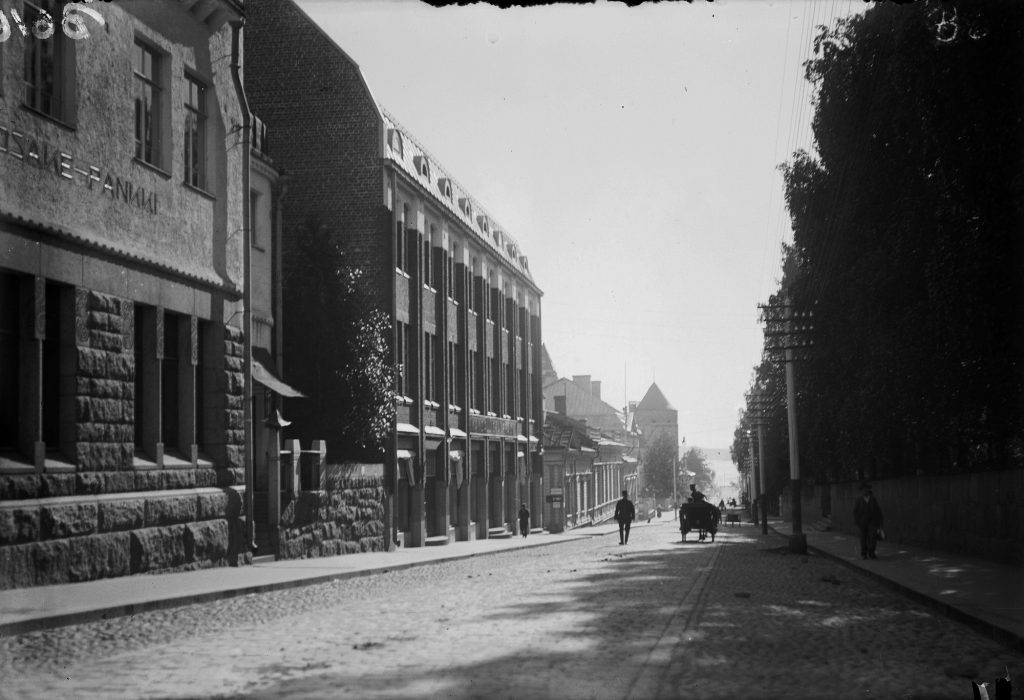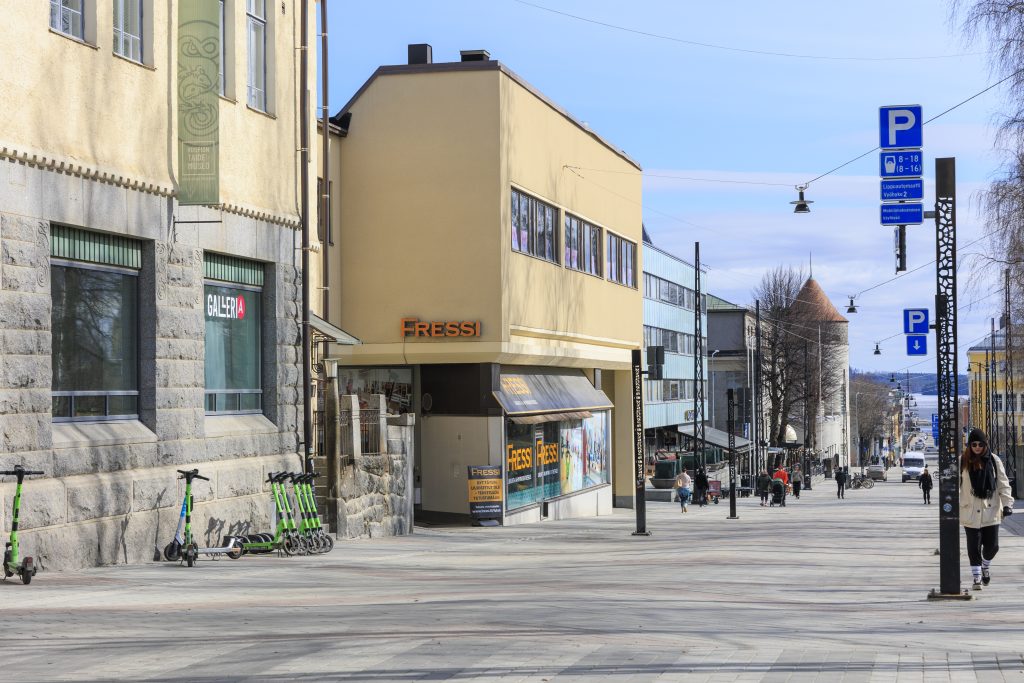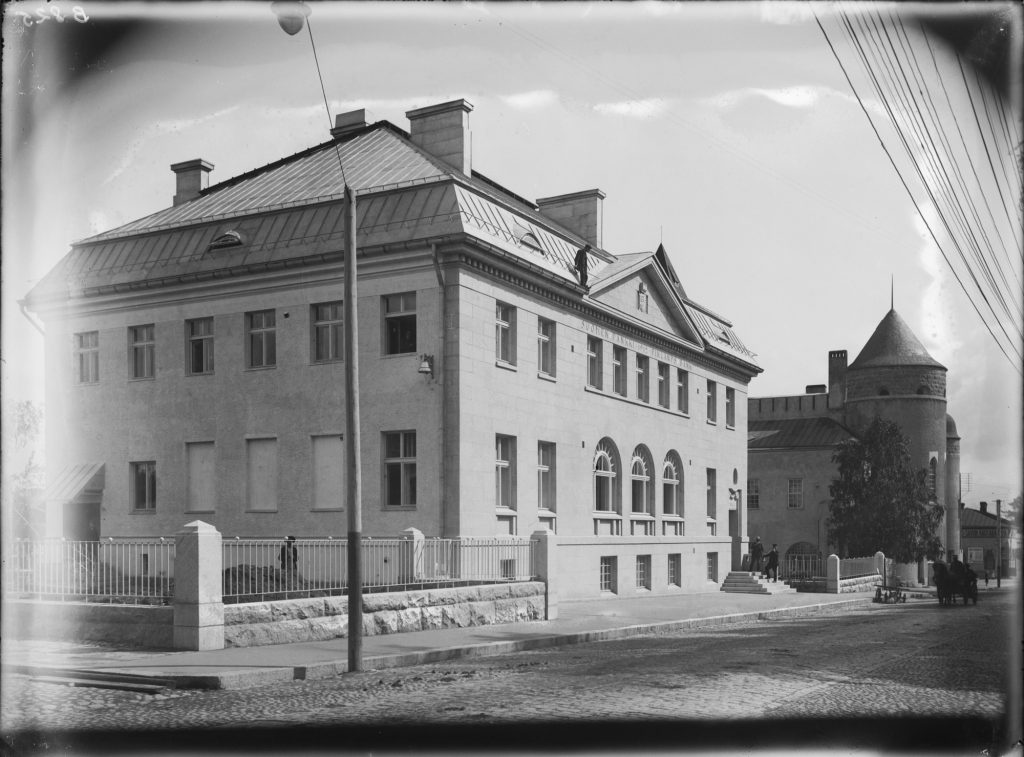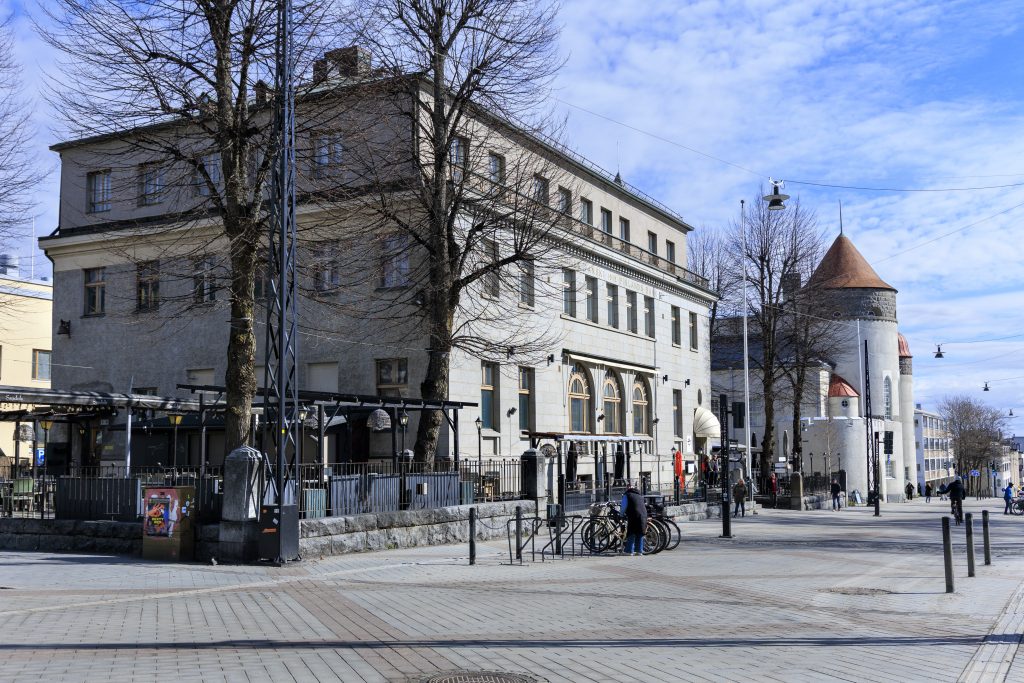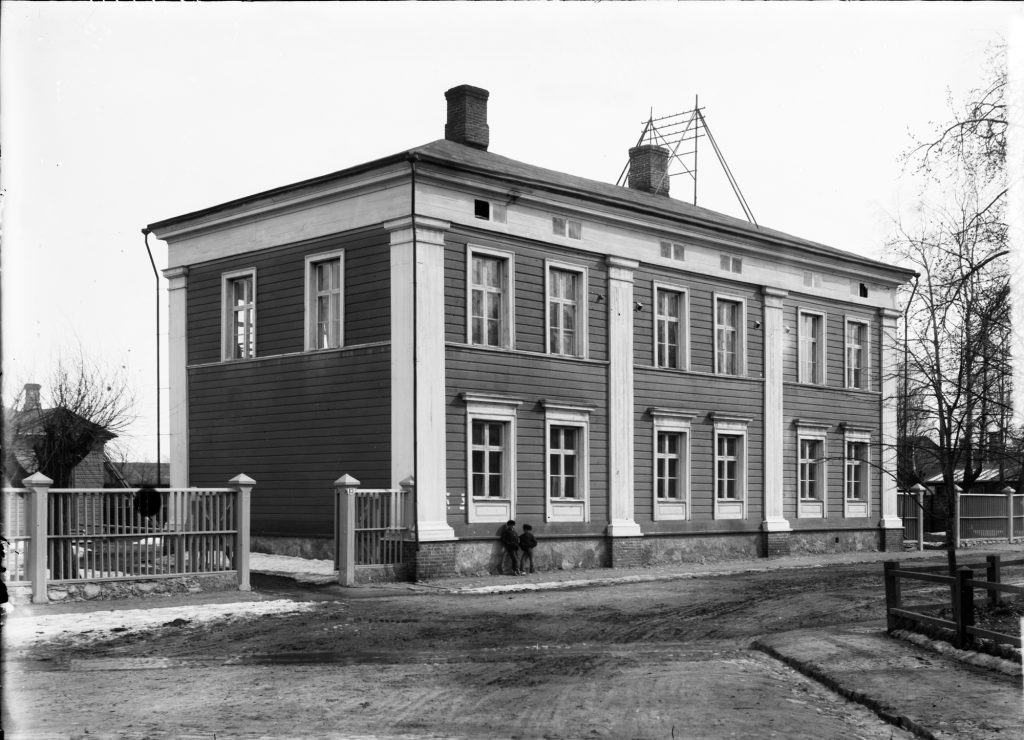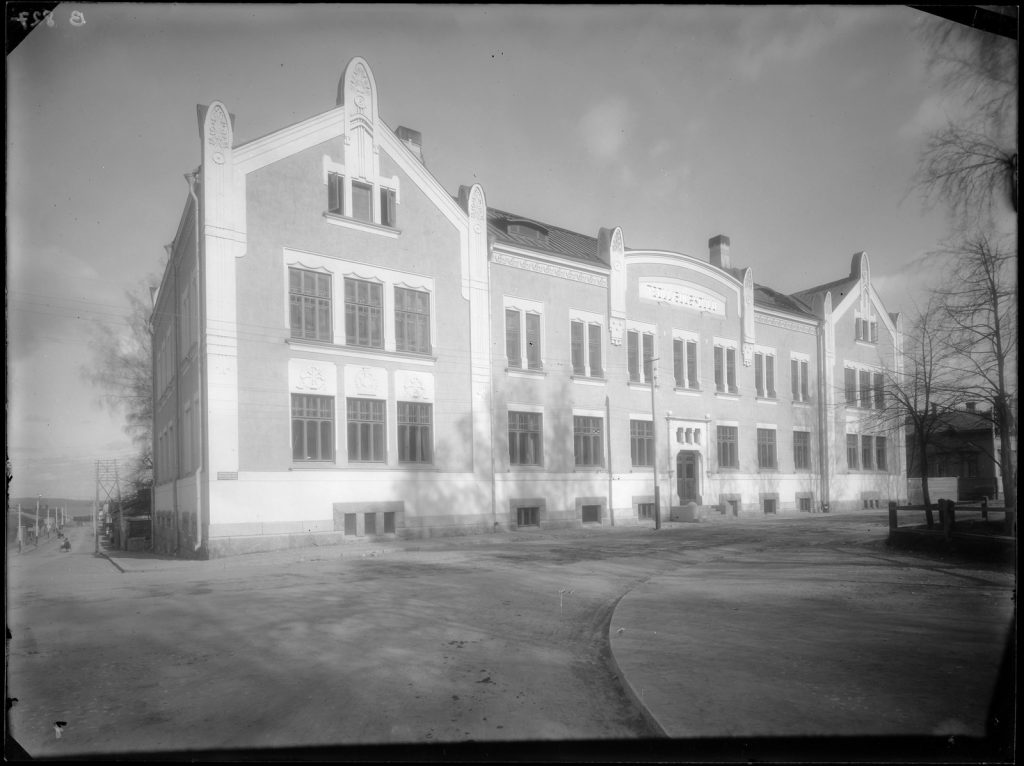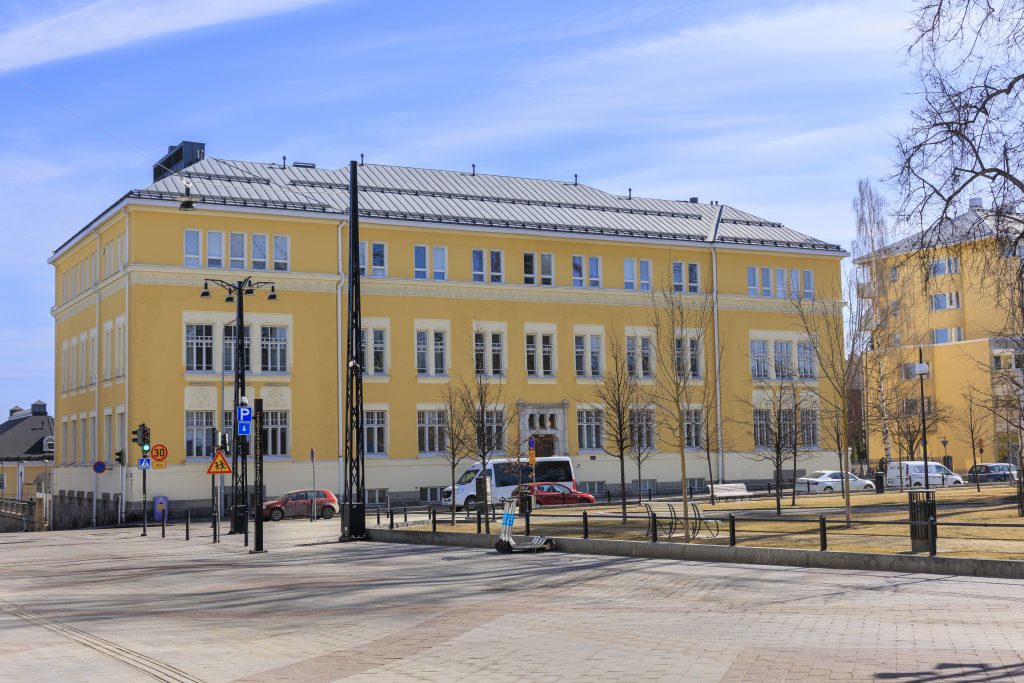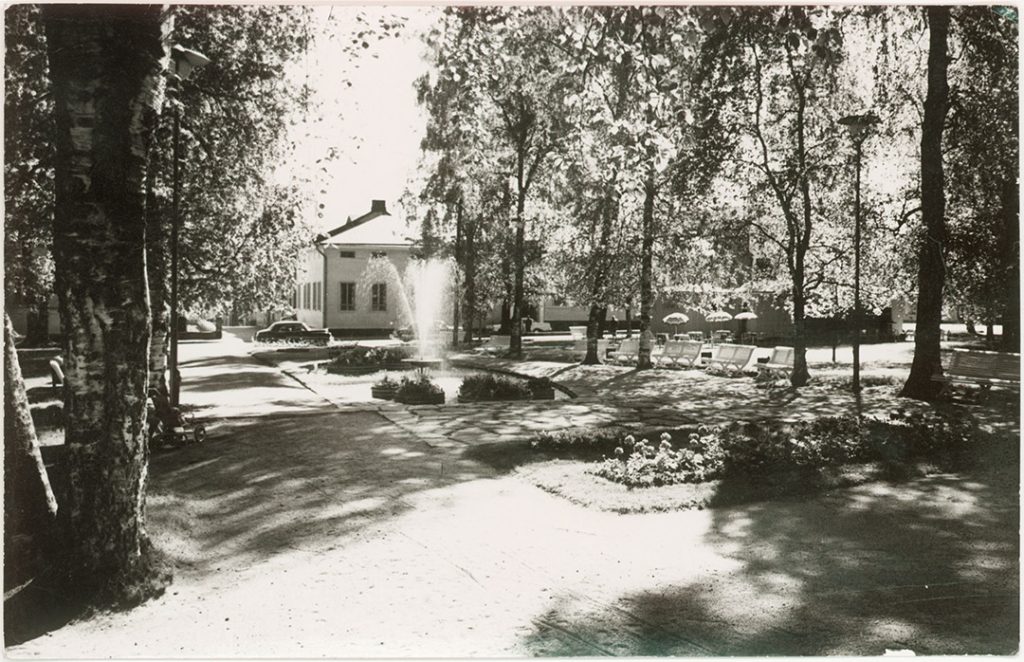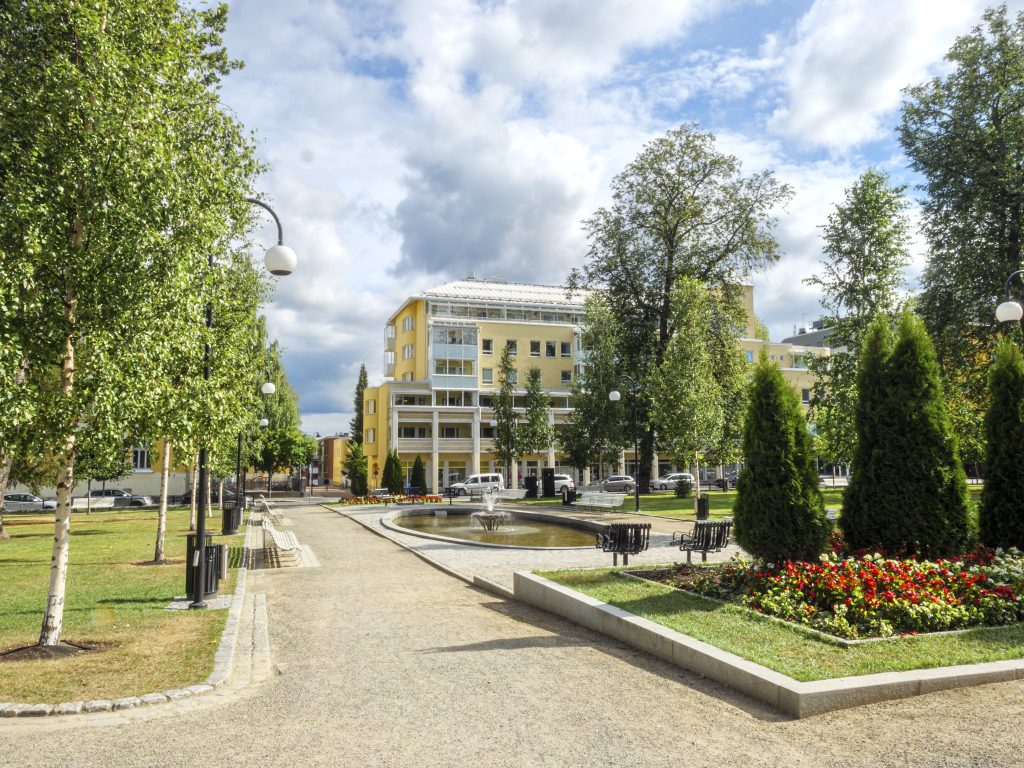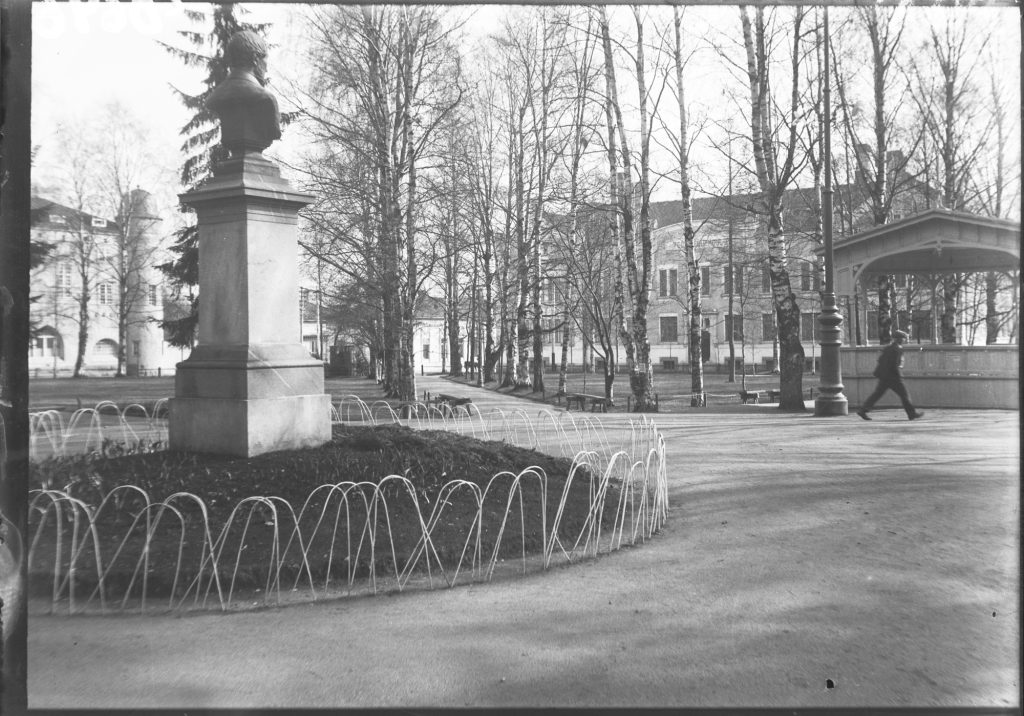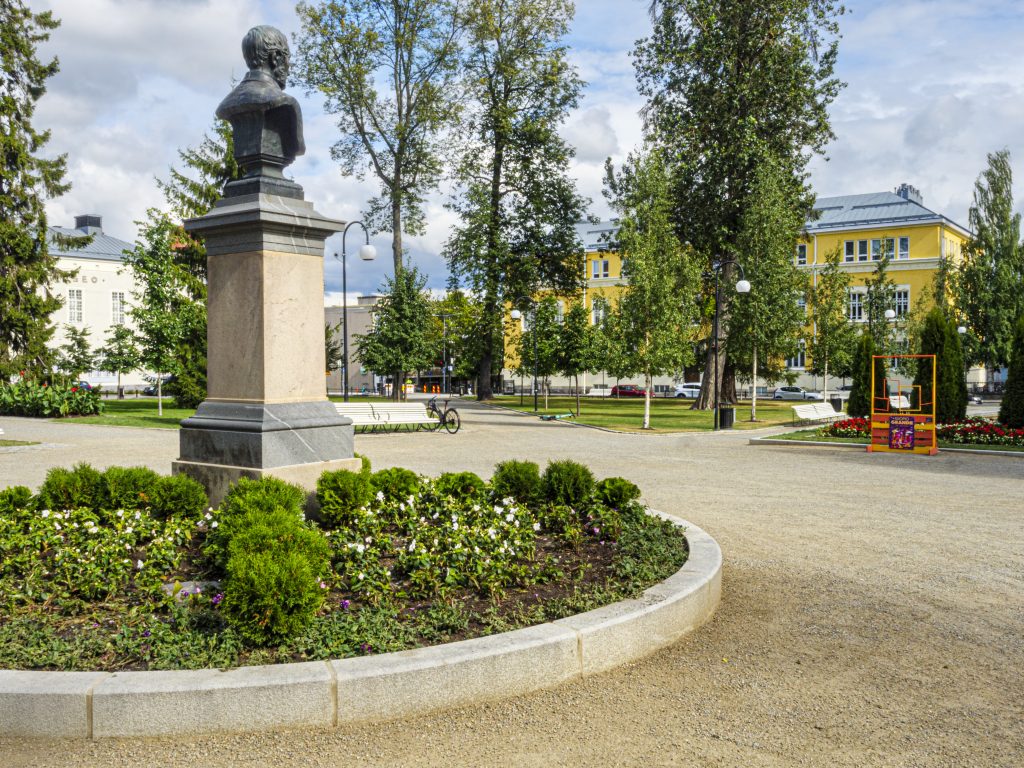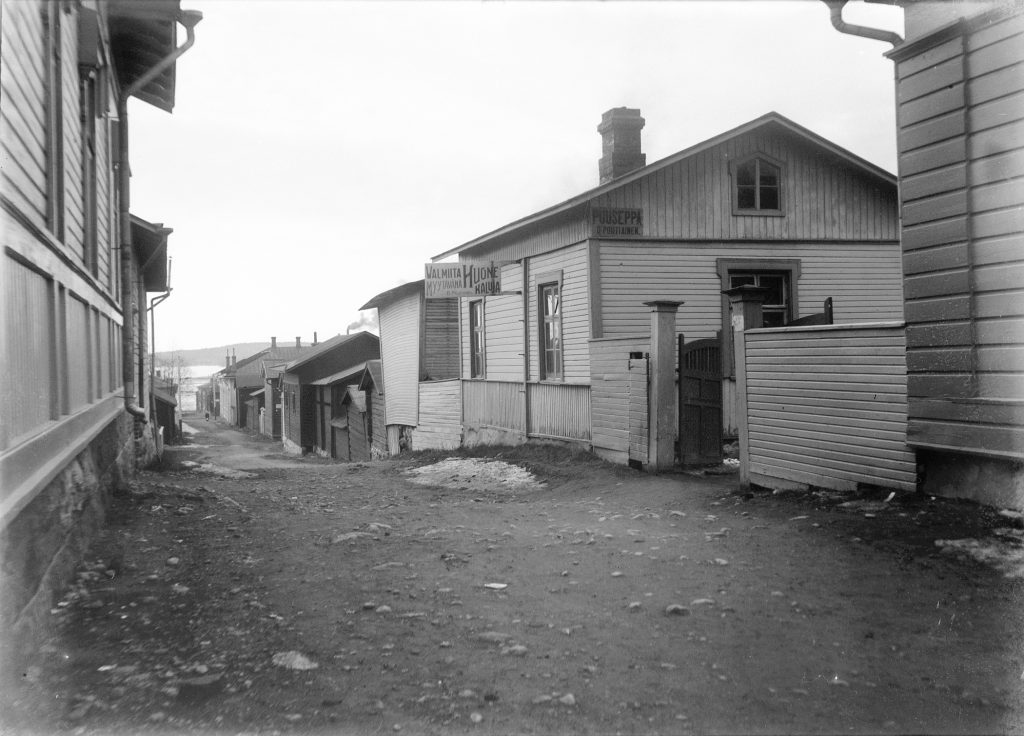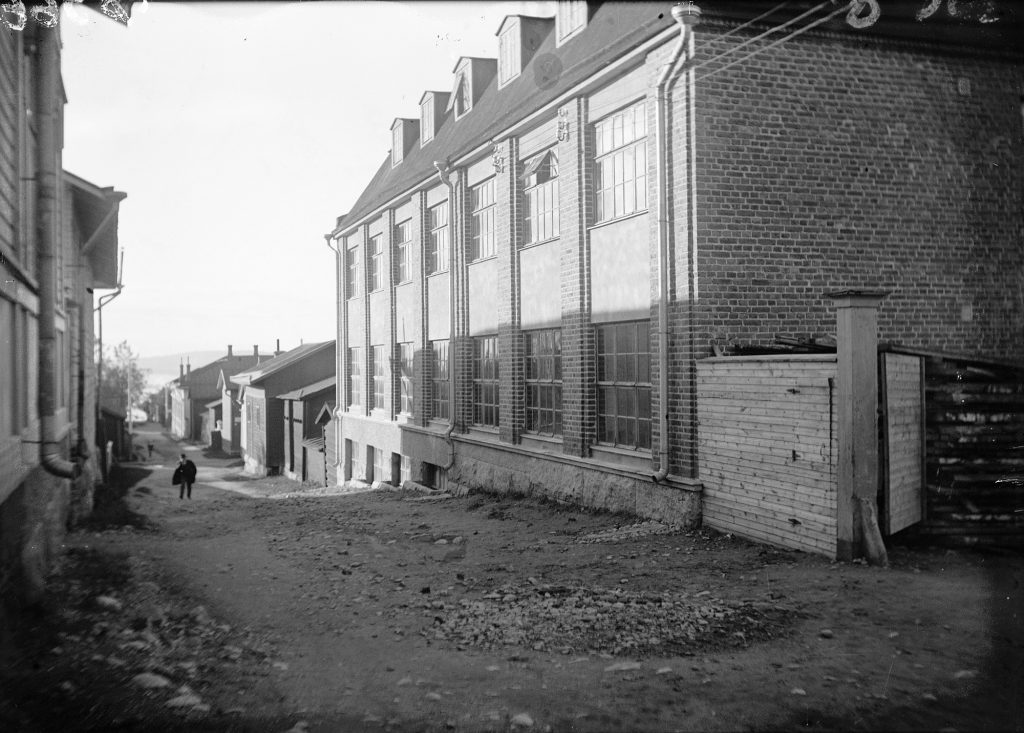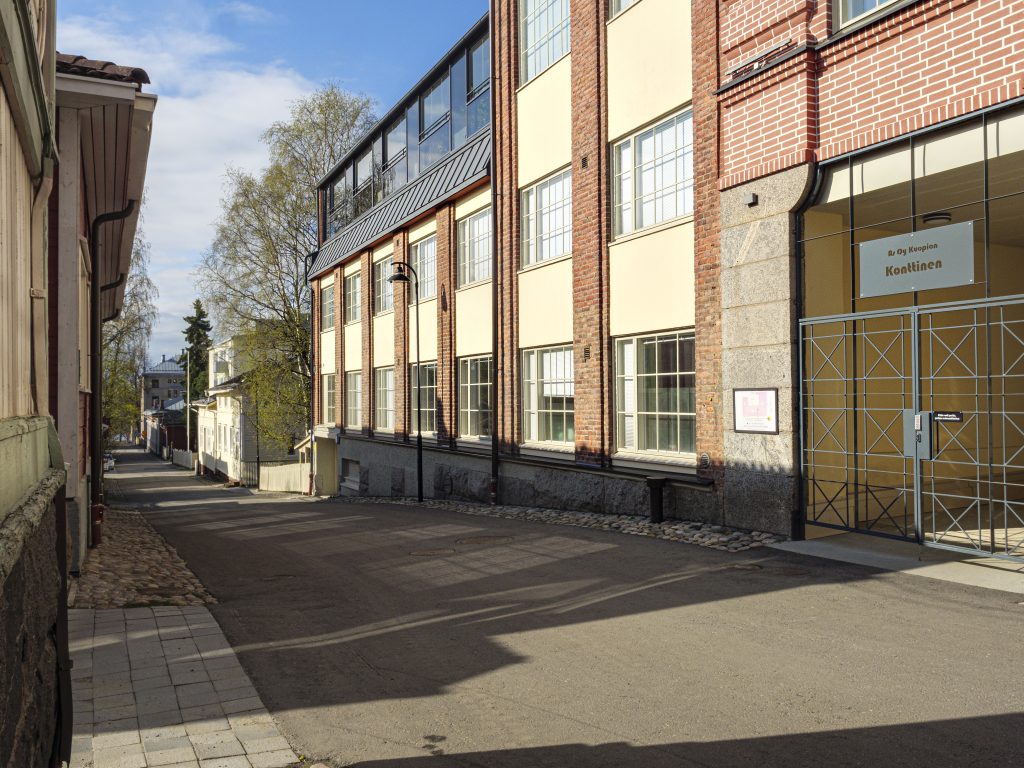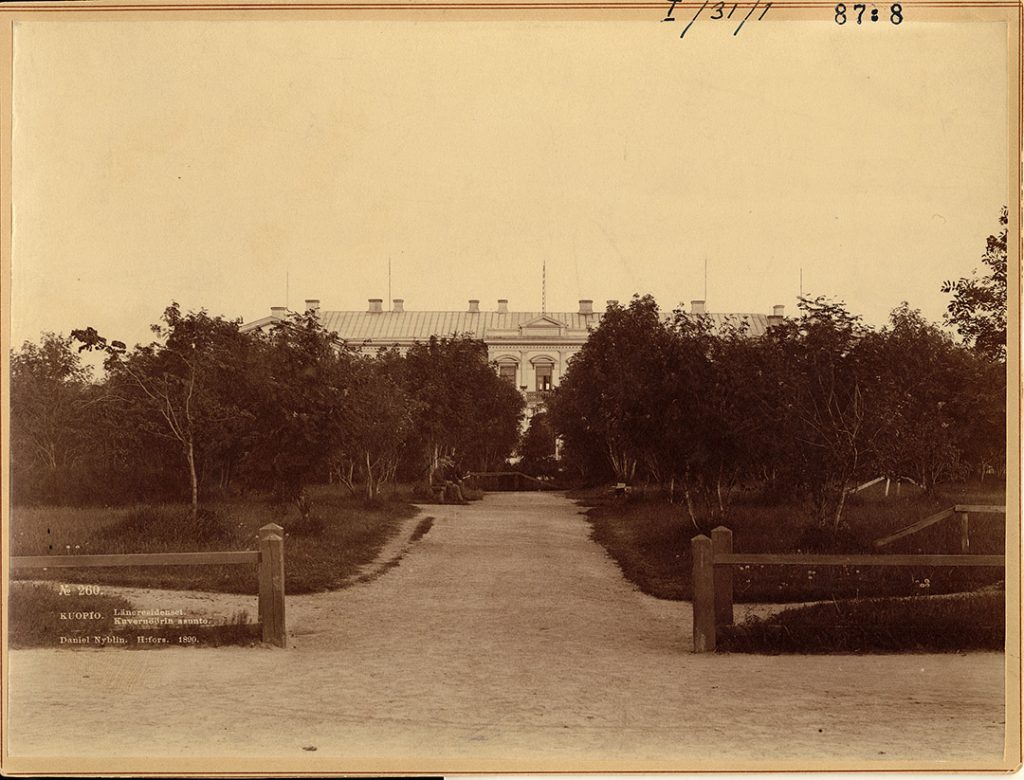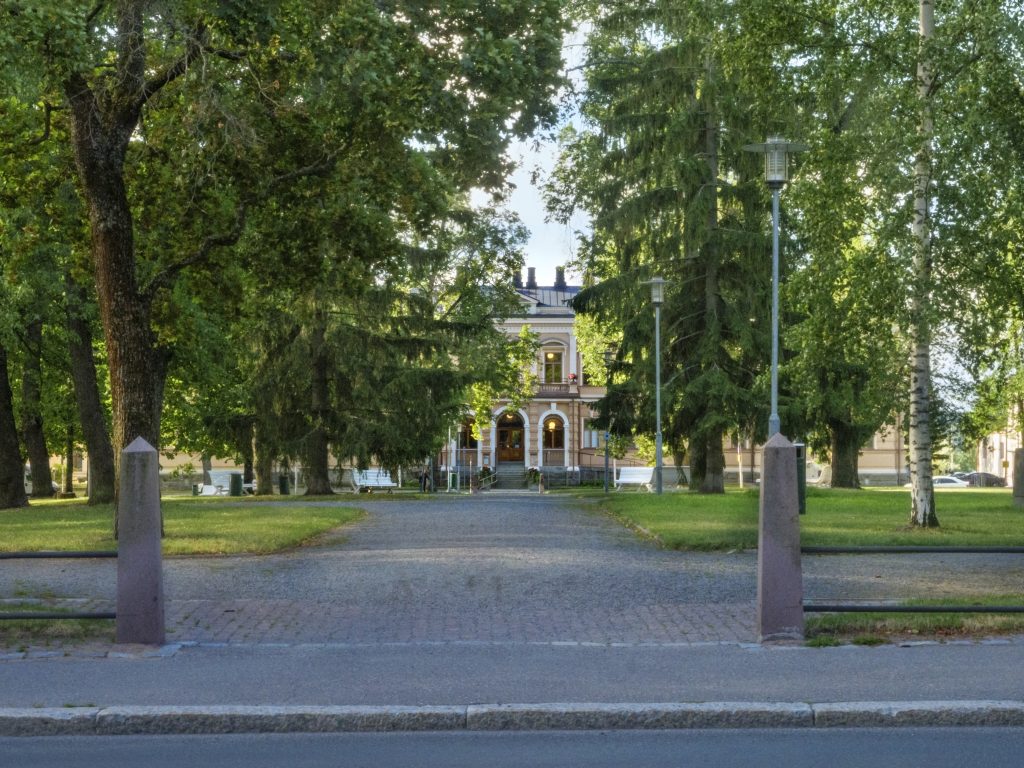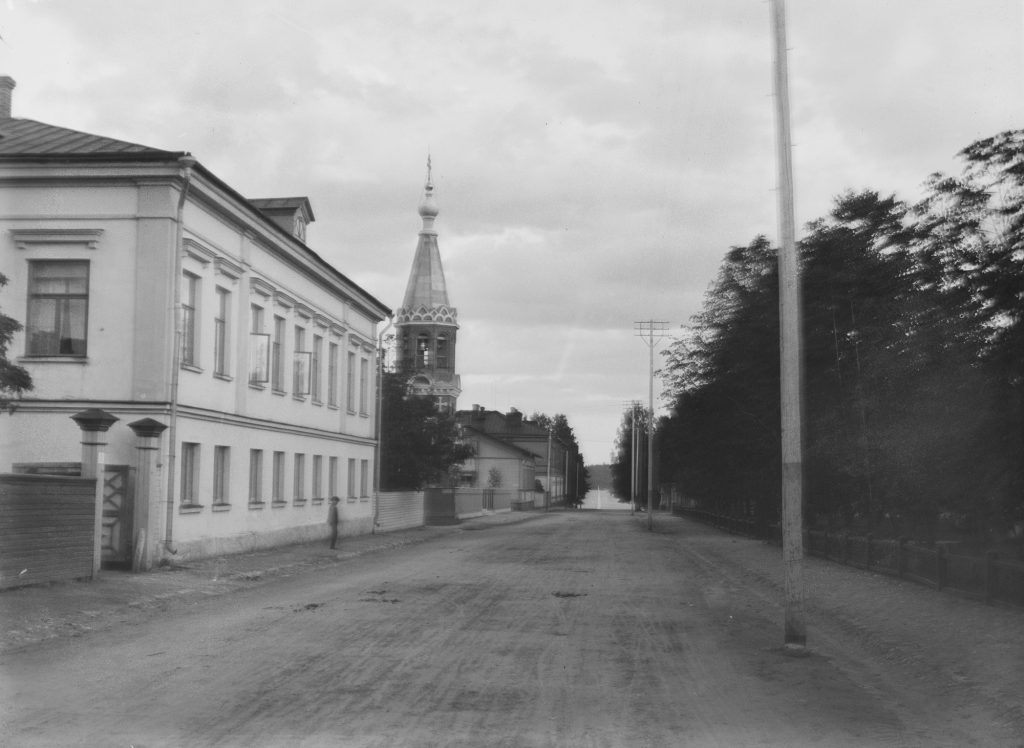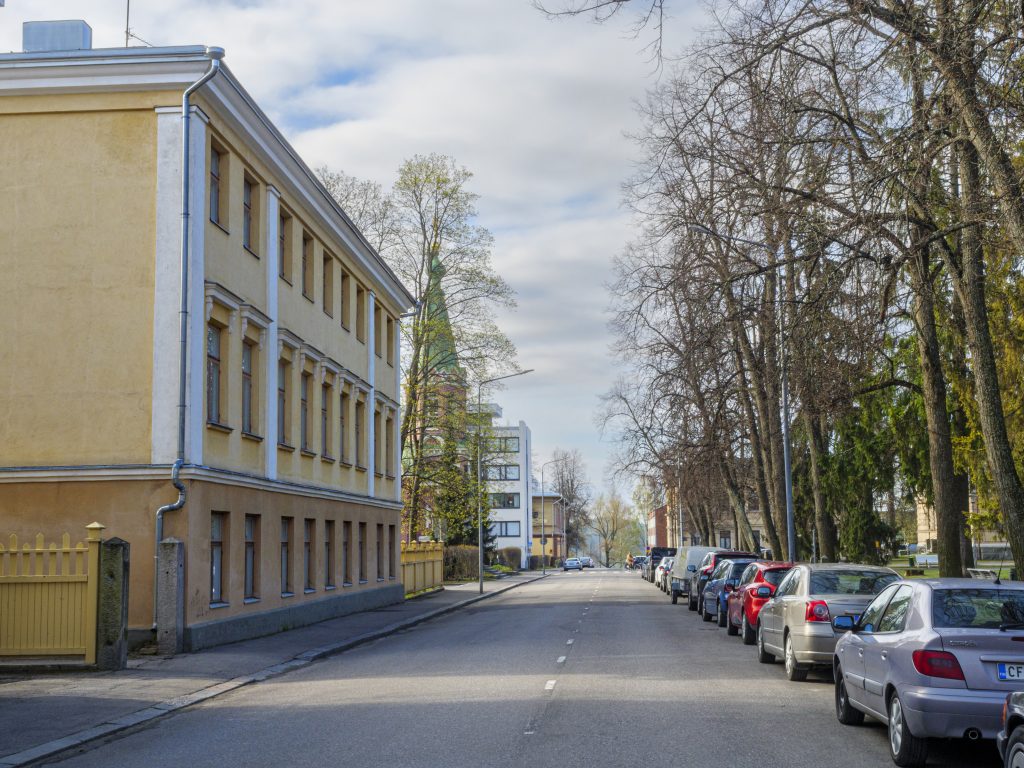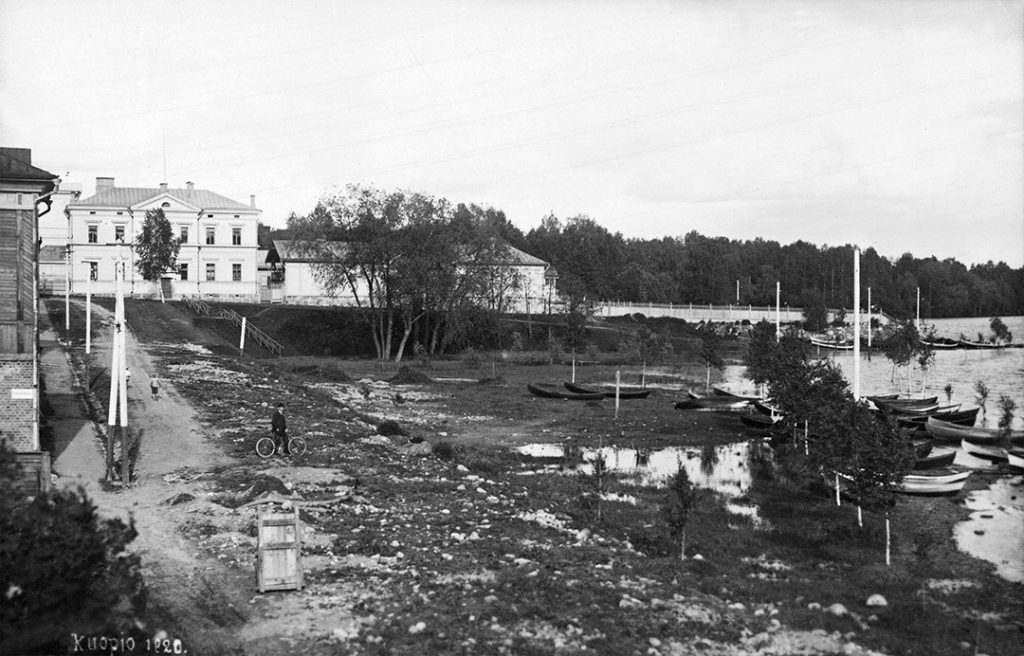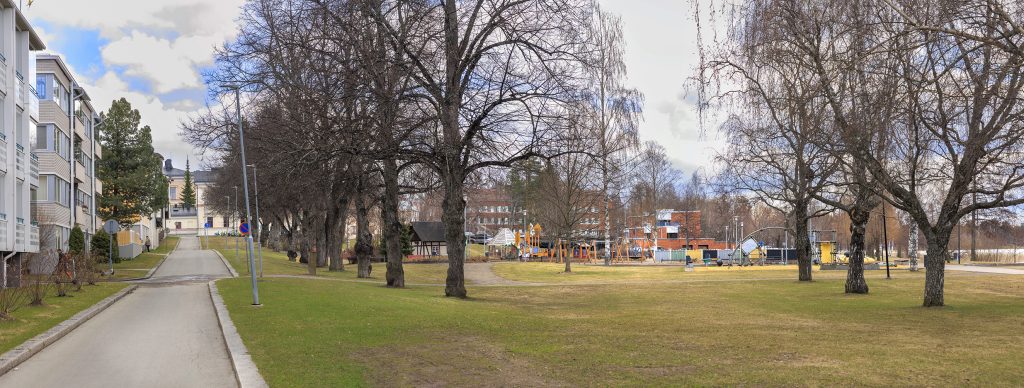Kuopio National Urban Park – past and present
To celebrate Kuopio’s 250th anniversary, we invite you on a journey through time in the area of the National Urban Park. Through pairs of photographs, we reveal views of culturally and historically significant sites such as Brahenpuisto Park, Kauppakatu Street, Piispanpuisto Park, Sepänkatu Street, Snellman School, the Snellman statue and fountain, Sorvarinkatu Street and the Bank of Finland.
In these photo pairs the past meets the present – old photographs tell stories of past eras, while new images show how these same places live and breathe the urban life today.
The photos show how the landscape has changed and invite to reflect on everything these places have seen and experienced.
Kauppakatu street
A view along Kauppakatu Street. The former Kansallis-Osake-Pankki building from 1904 now houses the Kuopio Art Museum Kumma. The windows on the ground floor were converted into display windows in the 1950s. Next to it, the red-brick Kansalliskauppa store was demolished and replaced in 1975 by a modern shop. At the time of photography (2025), the premises are used, among other things, as a fitness center.
Bank of Finland
A building designed for the Bank of Finland by J. V. Strömberg was completed along Kauppakatu Street in 1912. The building was raised by one additional floor in 1947. The bank operated in the building until 1993, when its activities moved to new premises on Puutarhakatu Street. Since 1998, the building has housed the restaurant Isä Camillo. The former caretaker’s apartment in the basement was converted into the cellar restaurant Pannuhuone Gust. Ranin in 2001.
Snellman School
The current Snellman School stands on the site, where a wooden building known as the City Manor once stood. This building later served as premises for a junior secondary school, industrial school and a vocational school. The present school building, designed by architect Werner Polón, was originally completed in 1904 as a new Vocational School. The building was damaged during the Winter War bombings, and in the early 1940s, it was renovated and extended by one additional floor. As a result, the facade lost its original plaster and cement ornamental decorations. In the early 1940s, the name of the Vocational School was changed to Kuopio Technical School. It operated in the building until 1966, when it moved to the new school park in Hatsala. In autumn 1967, the building was taken into use by Vahtivuori School, and in 1986, it was renamed as Snellman School.
Fountain in the Snellmaninpuisto Park
The first fountain – consisting of a basin and a water jet—was built in Snellmaninpuisto Park in the 1950s. In the old photograph, on the far right, you can also see the kiosk building that once stood along Maaherrankatu Street, later demolished, with its sunshades visible behind the trees. The fountain was renovated in 2019 as a part of the park’s major restoration project.
Snellman statue
The transformation of Snellmaninpuisto Park from a market square into a park began in the 1850s, when the first plantings were carried out and market trade was relocated to its current site. The park was named after Johan Vilhelm Snellman, who was active in Kuopio in the 1840s. His memorial was unveiled in 1886, featuring a bust sculpted by Johannes Takanen. The park was once a significant venue for public events, especially summer concerts in the music pavilion visible on the right side of the old photograph.
Sorvarinkatu Street
Sorvarinkatu Street photographed from Minna Canth Street looking south. In the first photo from the 1910s, the wooden building shown housed a furniture workshop operated by carpenter E. Poutiainen. In 1916, the wooden structure was replaced by the first brick section of the Konttinen furniture factory, designed by building master Antti Koponen. The building was expanded in the 1920s toward Minna Canth Street, based on plans by architect Oiva Kallio. Later, the building served various purposes, including offices and educational use, before being converted into residential use in the late 2010s.
Piispanpuisto Park
The Piispanpuisto Park and its surroundings represent the oldest part of Kuopio. The area’s buildings reflect its diverse history as a regional center of administration, religion and education. In old maps, the area was referred as Government Square and Residence Square, and it was the site of Kuopio’s first churches. The park’s history began in the mid-1880s, when the Provincial Government building was completed on the lakeside edge of the area. The park features memorials marking the locations of the former churches, as well as a monument to the city’s first founder, Pietari Brahe.
Sepänkatu Street
The yellow stone building, known as the Agricultural College, located on the eastern side of Piispanpuisto Park, is one of the oldest buildings in the area. It was commissioned by provincial surveyor Carl August Rehnström in 1852. Originally two stories high, the building was extended upward in 1922. The Agricultural College operated in the premises from the 1920s to the 1980s. After that, the building was used by the land surveying office. Before its use as a college, the building housed the collections of the Kuopio Patriotic Society and the Kuopio Society of Naturalists (Kuopio Museum). Behind the building stands the Cathedral of St. Nicholas. Completed in 1904 and designed by Aleksander Isaksson, the building’s plastered façade is painted with a brick pattern. After the wars, in 1944, Kuopio became the center of the Orthodox Church of Finland, with the cathedral serving as its central location.
Brahenpuisto Park
The transformation of the Brahenpuisto Park area into a landscaped park began in the 20th century. The 1925 zoning map shows the boundaries of the green space and the park layout. In an old photograph from the 1920s, the area is depicted during a flood. The first playground was built in the park in the 1950s, and in 1988, a new playground known as the “Pikku Kakkonen Park” was constructed. The most recent changes to the park took place in 2012, when both the surroundings and the play equipment were renovated. Even today, the northern edge of the park along Brahenkatu Street features park and large-leaved lindens that have reached a venerable age of over 80 years.
